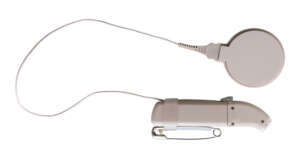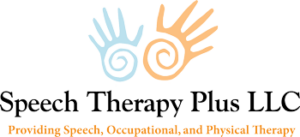Pediatric Speech Therapy Services
Speech Therapy Plus LLC. Pediatrics Speech Therapist
Pediatrics Speech Therapist, can teach your child to communicate with others.
EXPRESSIVE AND RECEPTIVE LANGUAGE DISORDER
An impairment making it difficult to form clear, complete sentences when speaking. Since it is hard to find the correct words, it can also be difficult to understand others. You might notice your child has a very basic vocabulary speaking in short, incomplete sentences. Answering simple questions can be difficult. Children normally show signs of Expressive and Receptive Language Disorders by age 4.
There are three types of language disorders:
- Receptive: Having a hard time understanding what others are saying
- Expressive: Difficulty expressing ideas and thoughts.
- Mixed Receptive and Expressive: Having difficulty understanding and speaking.
AUTISM SPECTRUM DISORDERS
ASD is a group of developmental disorders. It includes a large range of symptoms and levels of disability. Includes trouble with social interaction, communicating with others along with different behavioral challenges.
People with ASD often have these characteristics:
- Social Problems: Difficulty communicating or interacting with others.
- Repetitiveness: Repeating behaviors and limited interest.
Symptoms can be noticed by the age of two. They can be mildly noticeable or severely disabling. Diagnosis is done by studying the child’s development and behavior. The results will help in a treatment plan. Many individuals can live independent lives, be productive in the workforce and develop meaningful relationships.
ARTICULATION/PHONOLOGICAL DISORDERS
Articulation and Phonological Disorders include problems making sounds, substituting sounds, leaving off sounds, adding sounds or changing sounds can be Articulation/Phonological Disorders. This can make it difficult for others to understand the individual. Children often make speech errors, and many have this disorders if the errors continue. Keep in mind that not all speech errors are a disorder, but perhaps just a dialect or accent. Evaluation can be done by a speech-language pathologist by listening to the person and using formal articulation tests. They may also determine if the muscles in the mouth are correctly working.

APRAXIA
This is a motor speech disorder (CAS). Children with CAS can have problems with sounds, syllables and words. There is a problem with the brain sending signals to the lips, jaw tongue, etc to create speech. Even though there are a number of possible causes such as a brain condition or injury, stroke or infection, many times the exact cause is not determined. Some early signs of childhood apraxia can include limited babbling, inconsistent or increased errors with longer/complex syllables, omissions, distortions, excessive stress and loss of previously pronounced words. Other signs may include eating issues and clumsiness. A speech therapist can be helpful in identifying CAS.
AUDITORY PROCESSING
Refers to how the central nervous system uses auditory information. Children may show a range of listening issues. It might be difficult to understand someone in a noisy environment, not able to follow directions, or tell the difference between similar speech sounds. Diagnosis can be done by an audiologist. A series of hearing tests will be administered and once diagnosed, the disorder can be determined. Treatment will focus on three main areas such as: changing the environment, developing skills to handle the disorder and remedying the auditory deficit.

SOCIAL/PRAGMATIC LANGUAGE
Is our social language skills include what and how we say something along with our body language. Pragmatic skills are important for communication. Children with poor pragmatic skills often misinterpret communication and therefore have a difficult time responding. Adults can help children use language correctly in various social situations. Social/Pragmatic Language can be difficult to detect.
FLUENCY DISORDERS/ STUTTERING
An interruption in the flow of speech. Not being able to speak continuously and smoothly. For example stuttering and cluttering.
Stuttering is an example of a fluency disorder which can be caused by physical tension or a negative reaction. The severity of stuttering is often more severe based upon the situation and an increased pressure to communicate and it can differ from day to day.
Cluttering is another disorder that is rapid or an irregular rate of speech. Speakers have a breakdown in clarity of speech because the cluttering is at a rate too fast for the speaker to handle. Speaker may not be aware of the actual cluttering but can be aware that others find it difficult to understand them.
FEEDING AND SWALLOWING
Feeding and Swallowing disorder makes it difficult to suck, chew or swallow food. For example, a child with this may not completely close their lips to keep the food from falling out. Some signs of feeding and swallowing disorder are:
- During feeding, a child my arch or stiffen their body
- Irritability
- Refuse to eat or drink
- Extended feeding times, longer than 30 minutes
- Problem chewing
- Excessive drooling, coughing or gagging during mealtime
- Frequently spitting up or even vomiting
- Problem coordinating eating or drinking and breathing at the same time
- Irregular weight gain or growth
There are a variety of treatments based upon the finding of a primary physician and a speech-language pathologist.
TONGUE THRUST
The common name for Orofacial Myofunctional Disorders. The tongue moves too far forward during speech and/or swallowing. Children often have a swallowing pattern where their tongue moves too far forward, but by six months lose this reflex. Signs that this has not gone away will include a child looking, speaking and swallowing abnormally. Tongue Thrust is often diagnosed by a team of professionals which can include a dentist, orthodontist, physician and speech-language pathologist. If there are medical issues, those will be treated first and then a speech-language pathologist can develop a treatment plan to change the child’s oral posture and articulation.
VOICE DISORDERS
Voice Disorders affect speech production and are from a medical condition involving abnormal pitch, quality of sound or loudness that are produced by the larynx. A child can develop a voice problem for a variety of reasons. Voice Disorders can cause a drop in the child’s scholastics due to the fact that they feel uncomfortable or are unable to participate in classroom discussions. A diagnosis can be done by a pediatric otolaryngologist and voice-trained speech-language pathologist. A number of treatments are available depending on the diagnosis. Treatments can include surgery if there is a medical problem with the vocal cords and/or various techniques from a speech therapist.
COGNITIVE DEFICITS AND DISORDERS
Children with Cognitive Deficits and Disorders will show significant limitations in learning and functioning. In order to correctly diagnosis a child they should have a comprehensive psychoeducational testing. This should be done as soon as developmental delay is noticed. Early evaluation and intervention services can assist children in building skills while they are developing. The demands of puberty make it difficult to cope with social interactions for a child with Cognitive Deficits and Disorders. Cognitive Deficits and Disorders are managed by multidisciplinary approach to identify conditions, academic performance, social behavior and independence.
HEARING IMPAIRED/COCHLEAR IMPLANT REHABILITATION
This is a motor speech disorder (CAS). Children with CAS can have problems with sounds, syllables and words. There is a problem with the brain sending signals to the lips, jaw tongue, etc to create speech. Even though there are a number of possible causes such as a brain condition or injury, stroke or infection, many times the exact cause is not determined. Some early signs of childhood apraxia can include limited babbling, inconsistent or increased errors with longer/complex syllables. Omissions, distortions, excessive stress and loss of previously pronounced words. Other signs may include eating issues and clumsiness. A speech therapist can be helpful in identifying CAS.

We offer expert evaluation, diagnosis and treatment for a number of childhood disorders.
An interruption in the flow of speech and not being able to speak continuously and smoothly.
Stuttering is an example of a fluency disorder which can be caused by physical tension or a negative reaction. The severity of stuttering is often more severe based upon the situation and an increased pressure to communicate. It can differ from day to day.
Cluttering is another disorder that is rapid or an irregular rate of speech. Speakers have a breakdown in clarity of speech because the cluttering is at a rate too fast for the speaker to handle. Speaker may not be aware of the actual cluttering but can be aware that others find it difficult to understand them.
Pediatric Therapy Approaches Include:
prompt Therapy
Prompts for Restructuring Oral Muscular Phonetic Targets (PROMPT). Utilizing touch to the child’s jaw, tongue and lips to guide them on pronunciation. This technique will help develop motor control for proper oral muscular movements. A speech therapist will “teach” the patient’s muscles to produce a phoneme (the smallest increment of sound) correctly through the stimulation of touch.
AUGMENTATIVE COMMUNICATION EVALUATIONS & THERAPY
Used to help people who have difficulties communicating. An augmentative communication evaluation includes:
- Reviewing the student’s educational history
- Speech/Language evaluation
- Recommendations for augmentative communication therapy
- Monitor student’s progress
AAC Therapy can use a variety of items for children and families to communicate better such as a set of pictures or electronic speech devices. These devices along with a series of tests can help with communication. Kids who benefit from AAC may have following conditions:
- Autism
- Cerebral palsy
- Down Syndrome
- Brain injury
- Muscular dystrophy
- Spinal muscular atrophy
- Neuromuscular Conditions
- Muscle Tone Disability
- Spinal cord injury
LINDAMOOD PHONEME SEQUENCING® (LIPS®)
Improves the development of oral-motor, visual, and auditory feedback that will help a person learn to read, write and spell. Unlike a traditional phonics programs it is a basic, more extensive program. The steps in LiPS® include providing an environment for learning, consonant and vowel identification and classification, identifying simple and complex syllables and words, basic spelling and reading, identifying sight words, multisyllabic words, and reading and writing. To teach sound-letter association LiPS uses guided discovery techniques. Students explore physical movements to produce sound and learn to hear, see and feel the physical characteristics of sounds. LiPS® will help a student become a fluent reader and competent speller.

Speech Therapist accepting insurances.
View Julia Chernova on Linkedin.

